2 What makes a bumble bee?
Why do bees have sticky hair? Because they use honeycombs!
Identifying bumble bees is a great skill to have if you want to participate in bumblebee conservation. Every species of bumble bee has a unique shape, colour pattern, and size which can help us identify which bee is which. Knowing these distinguishing characteristics makes identifying bumble bees a lot easier and a lot more fun!

Before we jump into learning about how we can identify a specific species of bumble bee, it is important to understand their basic anatomy. This will help us know the parts of a bee we should look at to identify one species of bee from another.
There are six different parts of a bumble bee that are often used to differentiate between species: the head, thorax, abdominal segments, legs, pollen baskets and antennae. Take the time to familiarize yourself with these structures as they are very important when we want to identify bumble bees.
In the quizzes below, see if you can recognize important bumble bee identification characteristics on the yellow-banded bumble bee and on the tri-coloured bumble bee. Drag and drop the words in the left column into the correct position that matches the body part of the bumble bee.
Who is that bee?
There are a few different roles within a bumblebee colony that help keep the community in order. Queens, workers, males, and gynes (potential queens for next year) all have slightly different characteristics that we can use to determine what role a particular bee plays in a colony.
| Queens | Workers | Males | Gynes |
| Queen bumble bees are much larger than worker and male bees. You’ll usually only see the queen bees during the early spring before the workers emerge from the nest. After that, queens spend the majority of their time in the nest laying eggs as they let the other females do the work. Queens mate in the fall, overwinter and then die about a year after they emerged. | Worker bees emerge in early summer until the nest declines in late summer. These females are smaller than queens and male bumble bees as they have six abdominal segments, however, some are bigger as workers are larger later in summer. Workers also have pollen baskets on their hind legs, unlike their male counterparts. | Males emerge in late summer and in fall and their role in the colony is to mate with gynes, the potential queens for next year. Males have longer antennae than workers, seven abdominal segments instead of 6, and usually have yellow hairs on their face. | Gynes, the large females that have the potential to be queens in the next spring, start to emerge from late summer into early fall. These are essentially large worker bumble bees that could potentially become next year’s queens. These are the bees that mate with male bumble bees in fall and overwinter in burrows |
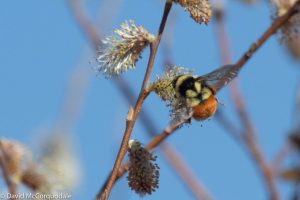 Source: David McCorquodale (2020), view page. Source: David McCorquodale (2020), view page. |
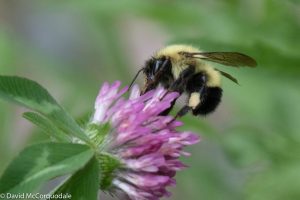 Source: David McCorquodale (2020), view page Source: David McCorquodale (2020), view page |
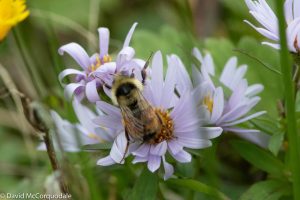 Source: David McCorquodale (2020), view page Source: David McCorquodale (2020), view page |
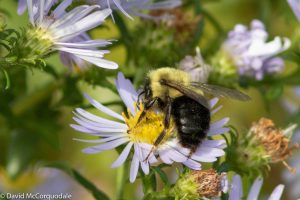 Source: David McCorquodale (2020), view page Source: David McCorquodale (2020), view page |
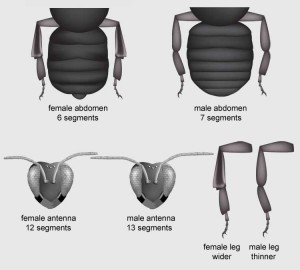
Queen bumble bees are extraordinary creatures. As previously mentioned, queen bumble bees emerge in the spring when outside temperatures can still be very cold around the time when alders, willows and dandelions are starting to bloom. One of the main reasons that queen bumblebees are able to emerge from hibernation before other insects is because they are able to generate their own internal body heat. This process is known as thermoregulation and without it, queen bumble bees would be unable to fly during these early months. Worker bumble bees are also able to do this!
Source: BBC Earth (2012). View site.
Let’s put what we have learned thus far to the test. In these multiple choice quizzes, can you identify if a bumble bee is male or female?
A female bumble bee that completes different tasks inside and outside the hive to keep things in tip-top shape. A female descendent of a queen bumble bee.
A large worker bumble bee that is a potential queen for next year.

